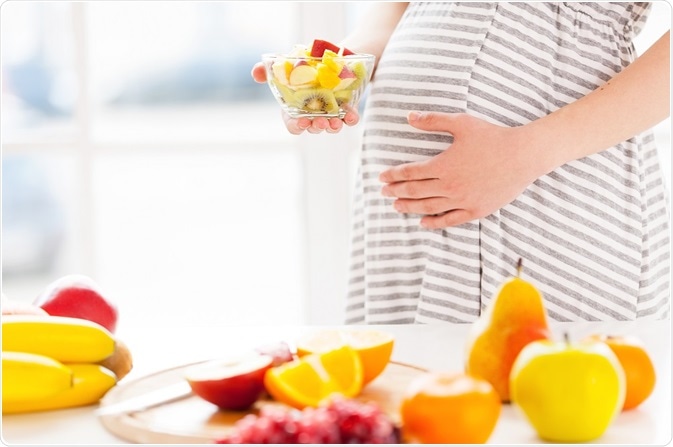It was in 1949 that a report was published, which was to reinforce obstetric starvation for hundreds of thousands of women for more than 60 years.
 Credit: g-stockstudiophoto/Shutterstock.com
Credit: g-stockstudiophoto/Shutterstock.com
Mendelson’s description of gastric aspiration in laboring women who were given general anesthesia for C-section (the eponymous Mendelson’s syndrome) became a powerful tool to withhold oral nutrition from women during labor and delivery. The irony is that this syndrome is so rare that only a single case occurred during the years between 2005 and 2013.
The need for nutrition
Pregnancy and delivery is an energy-intensive process and the whole body makes crucial adjustments to help fulfil the pregnant woman’s needs for abundant energy. The fat stores in the body are generally broken into when carbohydrates are not readily available, and this leads to the production of ketones during the process of fat utilization.
Increased levels of ketones in the blood indicate metabolic stress; this is seen during hard exercise, starvation, some forms of diabetic coma, and in some cases of labor. It is important to note that the link between prolonged labor and stress was first described more than twenty years ago, and was also linked to higher levels of ketones. Whether rising ketone levels are the cause or the effect of longer labor duration is still unknown, but metabolism is generally not geared towards ketone production.
It has been suggested that ketosis is a risk factor for dehydration and acidosis. It may be linked to increased interventions such as augmentation of labor, operative vaginal delivery, and postpartum hemorrhage. which combined with fatigue can increase the likelihood of augmentation, instrumental delivery and postpartum partum blood loss
Gastric emptying in labor
It is well-known that pregnancy and labor are associated with slowing of gastrointestinal motility. Withholding oral feeds does not reduce the danger of aspiration by itself, for the simple reason that the volume of gastric fluid remains unaltered by this or by pharmacological measures.
The use of anesthetic precautions is still the only way in which aspiration can be prevented. When narcotics are used, it is appropriate to stop oral feeds and encourage only sips of water, because these drugs do slow gastric emptying significantly.
The modern situation
The practice of anesthesia during labor and delivery has improved beyond recognition so that general anesthesia is very little used in the modern C-section. However, obstetricians continue to cling to the old rules that it is dangerous for a woman to eat or drink anything, or possibly anything but ice chips, during labor. A large study has recently shown that there is no increased risk when low-risk women eat or drink as they wish, during labor.
Many women do not want to eat much during active labor, anyway, but some women do feel hungry or thirsty during early labor. They should be encouraged to eat light nutritious meals including whole-grain bread, milk or non-fatty broths. Water should be given as required.
When women were encouraged to follow their wishes regarding food and drink during labor, there was no difference in various important outcomes, such as C-section or operative vaginal delivery rates, Apgar scores at 5 minutes, maternal satisfaction with the process and hypoglycemia.
Following the publication of these results, the American College of Obstetricians and Gynecologists (ACOG) unbent so far as to allow women to drink clear liquids according to their wish, during labor, but solid foods were still a no-no. They draw the support for this guideline from those issued by the American Society of Anesthesiologists.
Is forced fasting in labor an intervention?
It is important to realize that women in early labor may eat and drink freely if they are at home, so that limiting this freedom when they are in hospital for childbirth is an intervention.
The ACOG has spoken out against unnecessary interventions during labor. That includes making a laboring woman forgo food until the process is over, irrespective of her personal wishes, and without evidence of the benefit of such a measure.
Substitutions for oral feeds
Women in labor have traditionally been given intravenous fluids, usually isotonic dextrose, to replace oral feeds. But this is restricting to the patient’s freedom of movement, increases the risk of receiving too much fluid, and upsets the fluid-nutrient equilibrium.
Concentrated sugar solutions may cause hyponatremia. When there is no medical contraindication, denial of oral food or drink to a woman who may be in labor for up to 48 hours is considered unwarranted and unethical. It contributes to feelings of powerlessness and fear, and may reduce satisfaction with the experience and outcome of labor and delivery.
Conclusion
To quote the study authors, in the light of available evidence, “… women should have the autonomy and freedom to choose whether to eat or drink in labor, or not. Women should be able to consume what they desire and in doing so experience no adverse impact on labor, maternal or fetal outcomes.”
Further Reading